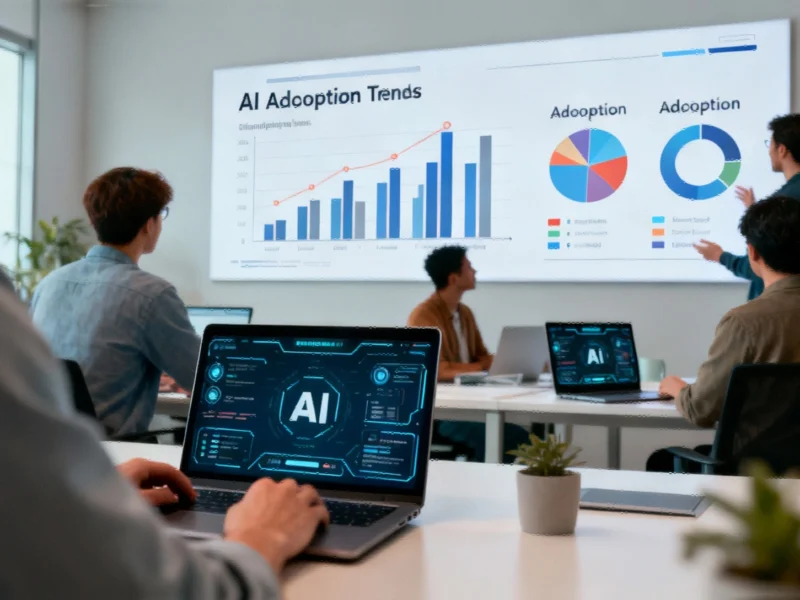The Uneven Landscape of AI Adoption
New research reveals a fascinating dichotomy in how artificial intelligence tools are being embraced across the technology sector. While AI adoption has become nearly universal among tech companies, the depth and manner of implementation vary dramatically between organizations and individual roles. According to a comprehensive Indeed survey of over 1,000 tech workers conducted with YouGov between May and June, we’re witnessing what might be called “the great AI divide” – where some professionals have integrated AI as a core component of their workflow, while others engage with it more sporadically.
This fragmented adoption pattern reflects broader industry developments where organizations are struggling to standardize AI implementation strategies. The survey data suggests that company size, available resources, and leadership vision significantly influence how deeply AI becomes embedded in daily operations.
The Spectrum of AI Integration
Tech professionals report using AI across a wide spectrum of engagement levels. At one end, some developers and data scientists have incorporated AI tools as fundamental components of their workflow, using them for code generation, debugging, and system optimization. These power users often report significant productivity gains and consider AI collaboration an essential skill.
At the other end of the spectrum, many tech workers engage with AI more opportunistically – using tools like ChatGPT for specific tasks rather than as integrated workflow companions. This ad hoc approach often reflects either limited access to enterprise AI tools or uncertainty about how to best leverage available technologies.
The middle ground reveals perhaps the most interesting trend: professionals who are gradually increasing their AI usage as they discover new applications. This gradual adoption pattern aligns with workforce demands for education and skill development in emerging technologies.
Drivers of Adoption Disparity
Several factors contribute to the uneven integration of AI across the tech sector:
- Resource allocation: Companies with dedicated AI budgets and implementation teams see more systematic adoption
- Skill development: Organizations investing in training programs show higher integration rates
- Use case identification: Teams that systematically identify AI applications achieve better results
- Cultural acceptance: Workplaces that encourage experimentation see more organic adoption
These disparities mirror major shifts in hiring practices across industrial and technology sectors, where AI literacy is increasingly becoming a differentiator in recruitment.
The Productivity Paradox and Measured Benefits
Despite implementation challenges, tech professionals overwhelmingly recognize AI’s potential benefits. The most commonly cited advantages include accelerated development cycles, reduced repetitive tasks, enhanced problem-solving capabilities, and improved code quality. However, many respondents noted that realizing these benefits requires thoughtful implementation rather than simply adding AI tools to existing workflows.
This measured optimism reflects a mature understanding that technology alone doesn’t drive improvement – it’s how organizations and individuals adapt their processes. The connection between AI adoption and productivity gains appears strongest in environments where government initiatives support technological advancement and digital transformation.
Industry Implications and Future Trajectory
The current state of AI adoption in tech has significant implications for the broader industry. Companies that successfully navigate this transitional period may gain substantial competitive advantages, while those that struggle with implementation could face productivity gaps. The research suggests we’re entering a period where AI proficiency may become as fundamental as traditional programming skills.
Looking forward, the adoption gap may narrow as best practices become more established and recent technology makes AI tools more accessible and intuitive. However, the current landscape represents a critical juncture where strategic decisions about AI implementation could have long-lasting consequences for organizations and individual careers alike.
The ongoing transformation also intersects with market trends in industrial technology, where AI adoption patterns in the tech sector often foreshadow broader industry movements. As tools mature and use cases expand, we may see the current adoption gap evolve into more specialized patterns of AI utilization across different technical roles and industries.
This article aggregates information from publicly available sources. All trademarks and copyrights belong to their respective owners.



